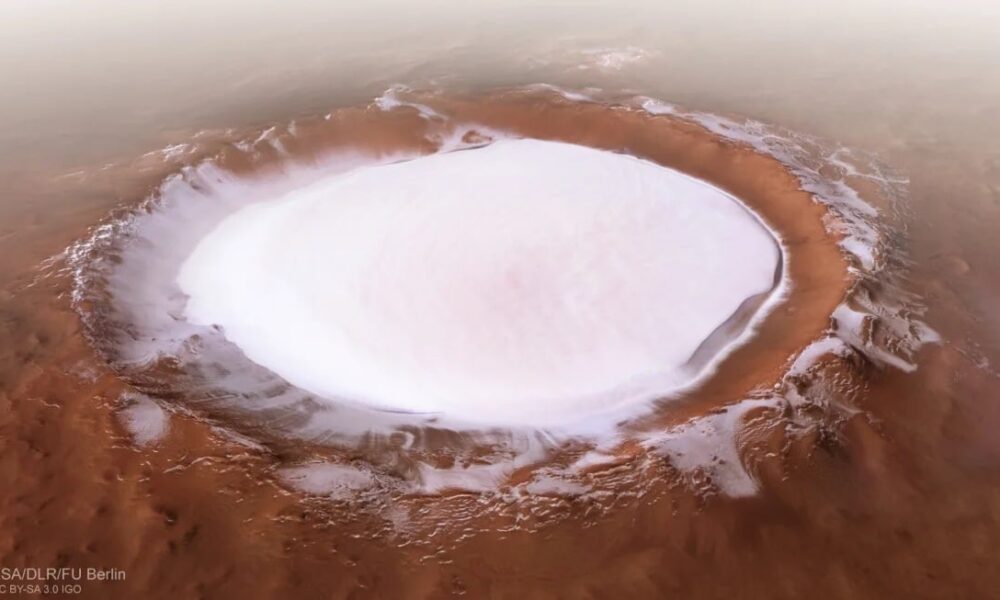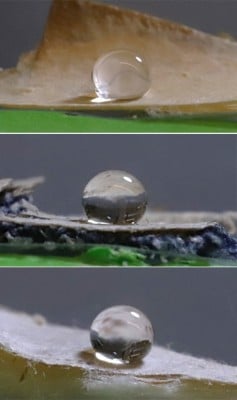Research conducted by a team of Japanese scientists has revealed that ice deposits within Martian craters hold significant clues to the planet’s geological history. The study, led by Trishit Ruj, an associate professor at Okayama University, suggests that these ice layers could provide insights into the periods when Mars was warmer and wetter, with a landscape once dominated by rivers, lakes, and potentially an ocean in its northern hemisphere.
For over fifty years, researchers have explored various surface features of Mars, including river channels and sedimentary deposits. These findings have prompted critical questions: How much water was present on Mars, and what processes contributed to its transformation into the cold, arid environment observed today? The team’s new findings, published in the journal Geology, indicate that the answers may lie within the icy depths of Martian craters.
Uncovering Mars’ Ice Ages
The research team focused on glacial landforms located in craters situated between 20°N and 45°N latitude. Utilizing high-resolution imagery from NASA’s Mars Reconnaissance Orbiter (MRO), specifically the Context Camera (CTX) and the High-Resolution Imaging Science Experiment (HiRISE), they examined features indicative of glaciation. This included ridges and debris formations left by ancient ice sheets.
The analysis revealed that ice deposits consistently formed on the shadowed southwestern walls of the craters, a pattern that remained stable across multiple glacial periods during the Amazonian period, which spans from approximately 640 to 98 million years ago. Dr. Ruj commented in a press release from Okayama University, “Similar to Earth, these shifts in Mars’ climate were caused by changes in the planet’s axial tilt (obliquity), which is similarly inclined as Earth’s.”
The research indicates that, unlike Earth, Mars experiences dramatic variations in its axial tilt over extended periods. This causes cycles of glaciation and thaw, which have gradually reduced the planet’s ice reserves. The study concluded that Mars has been gradually drying out since the Amazonian Era, marking it as the longest geological period in the planet’s history.
Implications for Future Exploration
The findings from this research carry significant implications for future crewed missions to Mars. As astronauts will need to utilize local resources for water, the ice deposits identified could be critical for growing food, producing oxygen, and generating drinking water. Given the logistical challenges of transporting supplies from Earth—where spacecraft typically take six to nine months for a one-way trip—locally sourced ice will be essential.
Moreover, the techniques developed to study Martian ice may also aid in understanding climate change on Earth. Rising global temperatures are leading to the rapid melting of glaciers and ice caps, threatening fresh water supplies. The imaging and modeling methods employed in this research could assist scientists in monitoring these changes on our own planet.
Dr. Hasegawa, a co-author from the Kochi Institute for Core Sample Research, noted, “Mars serves as a natural laboratory for understanding how ice behaves over vast timescales. The insights we gain here can sharpen our understanding of climate processes on Earth as well.”
As global challenges related to water scarcity become more pressing, the lessons learned from Mars may offer valuable perspectives for tackling similar issues here on Earth. With Mars serving as both a destination for exploration and a source of knowledge, the ongoing study of its climate history remains pivotal for future generations of scientists and explorers.







